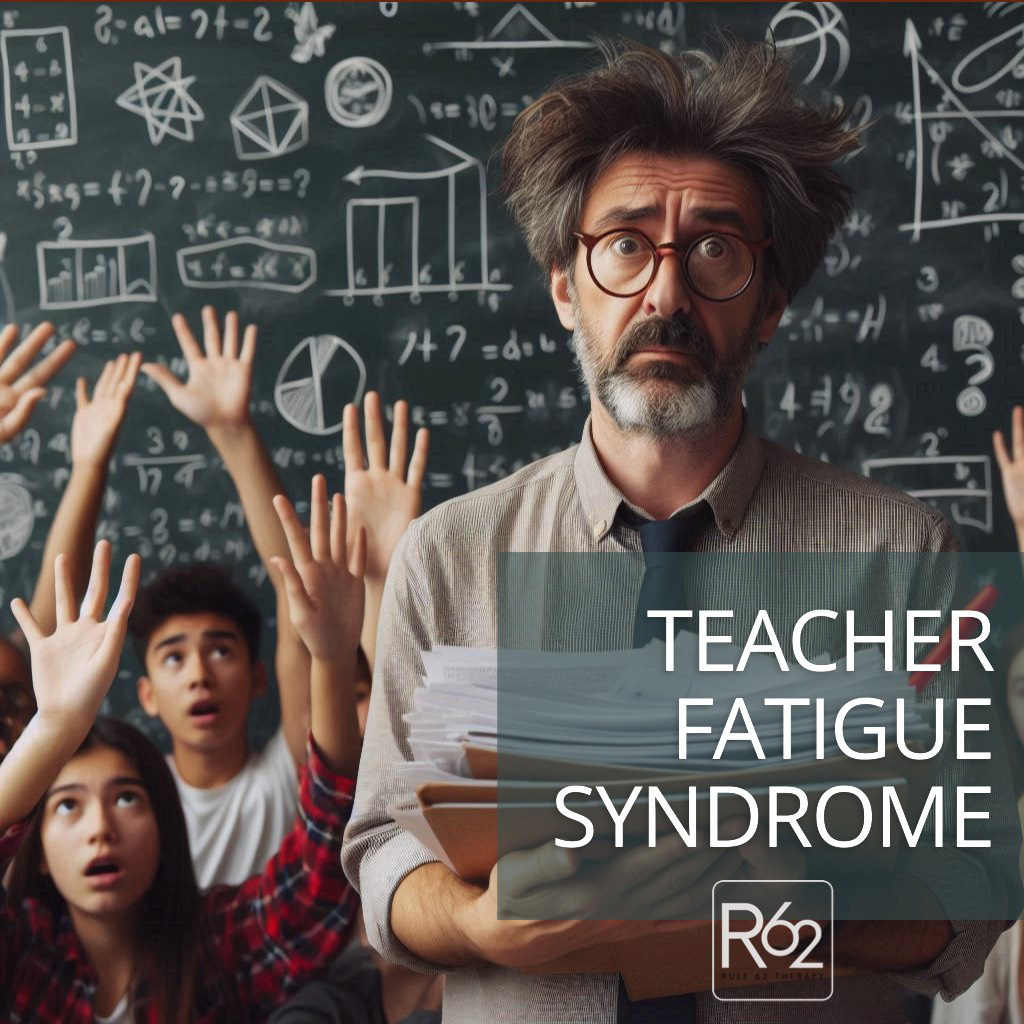
Understanding Teacher Fatigue Syndrome
In the realm of education, teachers are the unsung heroes who tirelessly work to shape young minds, inspire curiosity, and foster a love for learning. However, behind the scenes, many educators battle a silent adversary: Teacher Fatigue Syndrome. This phenomenon, often overlooked and underestimated, can have profound implications not only for the well-being of teachers but also for the quality of education they provide. In this blog post, we delve into what Teacher Fatigue Syndrome entails, its symptoms, and explore potential solutions to alleviate its impact.
Defining Teacher Fatigue Syndrome:
Teacher Fatigue Syndrome, also known as teacher burnout, is a condition characterized by physical, emotional, and mental exhaustion resulting from prolonged stress, overwork, and feelings of being overwhelmed within the teaching profession. It’s not simply a matter of feeling tired after a long day at work; rather, it’s a persistent state of fatigue that can significantly impair a teacher’s ability to perform effectively in the classroom and maintain their overall well-being.
Symptoms of Teacher Fatigue Syndrome:
Recognizing the signs and symptoms of Teacher Fatigue Syndrome is crucial for early intervention and prevention. Here are some common indicators that educators may be experiencing burnout:
- Chronic Exhaustion: Feeling constantly tired, even after a full night’s sleep, is a hallmark symptom of Teacher Fatigue Syndrome. Teachers may find it challenging to summon the energy needed to engage with their students and perform their duties effectively. This is often also felt at home and can be accompanied by guilt for not having the energy to be at their best for their own families.
- Emotional Drain: Teachers experiencing burnout often feel emotionally drained and detached from their work. They may become cynical, irritable, or indifferent towards their students, colleagues, or the educational system as a whole.
- Reduced Performance: Burnout can manifest in decreased job performance, including difficulty concentrating, making decisions, or maintaining organizational skills. This can impact lesson planning, classroom management, and overall teaching effectiveness.
- Physical Symptoms: The toll of burnout is not limited to mental and emotional health; it can also manifest in physical symptoms such as headaches, muscle tension, gastrointestinal issues, neurological conditions, and compromised immune function.
- Withdrawal and Isolation: Teachers experiencing burnout may withdraw from social interactions, both within the school community and outside of it. They may feel a sense of isolation and disconnection, further exacerbating their feelings of distress. This can also lead to feelings of depression.
Utilizing Therapy to Combat Teacher Fatigue Syndrome:
In the battle against Teacher Fatigue Syndrome, therapy can be a powerful tool for educators to regain balance, resilience, and a sense of well-being. Here’s how therapy can play a pivotal role in helping teachers cope with burnout:
- Professional Support: Therapists specializing in working with educators understand the unique challenges and stressors that teachers face. They provide a safe and confidential space for teachers to explore their feelings, frustrations, and concerns without fear of judgment.
- Coping Strategies: Therapy equips teachers with practical coping strategies to manage stress, set boundaries, and cultivate self-care habits. Through techniques such as cognitive-behavioral therapy (CBT), mindfulness, and relaxation exercises, educators learn to identify and challenge negative thought patterns and develop healthier ways of coping with adversity.
- Emotional Regulation: Teachers often juggle complex emotions, from empathy and compassion to frustration and disappointment. Therapy helps educators develop emotional regulation skills, enabling them to navigate challenging situations with greater resilience and equanimity.
- Boundary Setting: Setting boundaries is essential for preventing burnout and maintaining a healthy work-life balance. Therapists assist teachers in establishing clear boundaries between work and personal life, advocating for their needs, and prioritizing self-care without guilt or self-judgment.
- Building Resilience: Resilience is the ability to bounce back from setbacks and adversity. Therapy fosters resilience by helping teachers develop a growth mindset, cultivate self-compassion, and reframe challenges as opportunities for growth and learning.
- Addressing Underlying Issues: Teacher burnout is often exacerbated by underlying issues such as perfectionism, imposter syndrome, or unresolved trauma. Therapy provides a supportive environment for teachers to explore these underlying issues, gain insight into their origins, and develop healthier ways of relating to themselves and others.
- Peer Support and Community: Group therapy or support groups specifically tailored for educators offer the opportunity for peer support, validation, and solidarity. Sharing experiences, exchanging coping strategies, and receiving encouragement from fellow teachers can be immensely empowering and validating.
- Long-Term Well-being: Therapy is not just a short-term fix; it’s an investment in long-term well-being. By addressing the root causes of burnout and equipping teachers with the skills and support they need to thrive, therapy lays the foundation for sustained health, happiness, and effectiveness in the teaching profession.
Find a Therapist in Virginia or Colorado
Administrative Solutions for Addressing Teacher Fatigue Syndrome:
While combating Teacher Fatigue Syndrome requires a multifaceted approach, there are several strategies that educators, school administrators, and policymakers can implement to mitigate its impact. Encouraging teachers to prioritize self-care is essential. This includes establishing boundaries between work and personal life, engaging in regular exercise, practicing mindfulness or meditation, and ensuring adequate sleep and nutrition. This can involve providing access to mental health resources, offering professional development opportunities focused on stress management and resilience, and fostering a sense of community and collaboration among staff members. Addressing excessive workloads and unrealistic expectations is crucial for preventing educator burnout. School administrators should strive to create manageable teaching schedules, provide adequate planning time, and implement strategies to reduce administrative burdens on teachers. Administrators can also advocate for systemic changes within the education system is essential for addressing the root causes of Teacher Fatigue Syndrome. This may involve advocating for reduced class sizes, increased funding for education, and policies that prioritize teacher well-being and job satisfaction.



